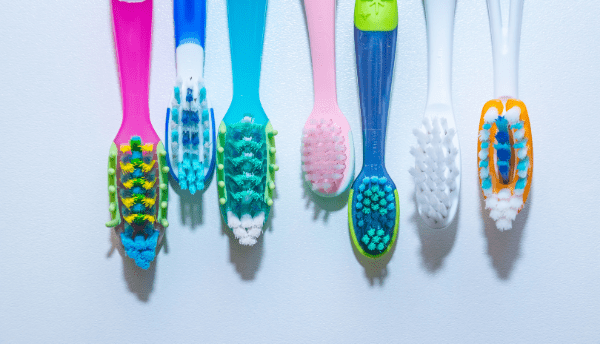Choosing the Right Toothbrush for Your Needs
BRIGHT SMILES TIPS
11/11/20244 min read


Understanding Your Dental Needs
When it comes to maintaining optimal oral health, understanding your specific dental needs is paramount. Every individual has unique dental conditions, which can significantly influence the type of toothbrush that is most suitable for them. Common issues such as tooth sensitivity, the presence of orthodontic appliances, and gum health require careful consideration when selecting a toothbrush.
For individuals with tooth sensitivity, it is crucial to choose a toothbrush that offers a gentle touch. Soft-bristled toothbrushes are often recommended, as they can effectively clean the teeth without causing discomfort or further aggravating sensitivity. Those with sensitive gums or teeth may benefit from electric toothbrushes that have built-in pressure sensors to ensure optimal brushing force.
Individuals who wear braces or other orthodontic appliances must also take their unique needs into account. Specialized orthodontic toothbrushes, which typically feature V-shaped bristles, can help reach areas around brackets and wires more effectively. Flossing tools and interdental brushes can further support individuals in maintaining adequate oral hygiene during orthodontic treatment, highlighting the importance of using the right toothbrush for their situation.
Moreover, individuals with gum issues, such as gingivitis or periodontal disease, should opt for toothbrushes designed to promote gum health. These may include toothbrushes with rubberized bristles or those specifically branded for gum care, aiming to provide a more thorough clean without being harsh on the gums.
It is essential to recognize that these differing dental needs can significantly affect not only the choice of toothbrush but also the techniques employed during brushing. By being aware of personal dental conditions and understanding their importance, individuals can make informed decisions that will ultimately enhance their oral hygiene practices and overall dental health.
Types of Toothbrushes: Manual vs. Electric
When considering the right toothbrush for your oral hygiene, understanding the differences between manual and electric toothbrushes is crucial. Each type comes with its advantages and disadvantages, which can cater to various preferences and dental needs. Manual toothbrushes have been a longstanding choice for many individuals. They are typically more affordable and readily available, making them a convenient option for most people. These toothbrushes rely on the user’s technique and effort to effectively remove plaque. A patient and thorough brushing session can yield excellent results, especially when using the correct brushing technique and a toothpaste containing fluoride.
On the other hand, electric toothbrushes offer unique features that can enhance the user experience. Many electric models come with timers to ensure users brush for the recommended two minutes, as well as pressure sensors to prevent damaging the gums. Studies have shown that electric toothbrushes can be more effective at reducing plaque and gingivitis compared to their manual counterparts, making them particularly beneficial for individuals with limited dexterity or those who struggle with maintaining an effective brushing technique.
However, electric toothbrushes tend to be more expensive than manual ones, and they require batteries or charging, which can be a drawback for some consumers. Additionally, issues regarding portability may arise, especially when traveling. Ultimately, the choice between a manual and electric toothbrush depends on individual preferences, oral health requirements, and financial considerations. When evaluating which type suits you best, it is essential to consider factors such as ease of use, cost, and specific features that may enhance your brushing experience. A thorough understanding of these differences can guide you in making an informed decision about your dental care tools.
Choosing the Right Bristle Type
Selecting the appropriate bristle type for your toothbrush is crucial for maintaining optimal oral health. Toothbrush bristles come in three primary hardness levels: soft, medium, and hard. Each type serves different needs, and understanding the impact of bristle hardness on both gum health and plaque removal can guide you in making an informed choice.
Soft bristles are the most commonly recommended option, particularly for individuals with sensitive gums or those recovering from dental procedures. They effectively remove plaque and debris without causing damage to the gums. Many dental professionals advocate for the use of soft bristles as they help prevent abrasion and minimize the risk of gum recession. With the appropriate technique, soft bristles can provide adequate cleaning while ensuring comfort during brushing.
Medium bristles, while effective for plaque removal, can sometimes pose a risk for those with fragile gums. They strike a balance between cleaning effectiveness and comfort, but if you experience discomfort or bleeding gums, a gradual transition to soft bristles may be advisable. It’s essential to monitor your gum health and adjust your toothbrush choice if needed, as a proper brush can significantly affect your oral hygiene regimen.
Hard bristles, on the other hand, are generally not recommended for everyday use. While they can offer a more aggressive cleaning method, they might inadvertently lead to gum irritation and erosion over time. Hard bristles can also damage enamel, leading to other dental issues if not used with caution. If you currently use a hard-bristled toothbrush, consider transitioning to a softer option and doing so gradually to allow your mouth to adjust.
Ultimately, the right bristle type should cater to your individual comfort and specific dental condition. Regular dental check-ups can provide insight into the best choices for your needs and help maintain your overall oral health.
Additional Features to Consider
When selecting a toothbrush, there are additional features that can significantly enhance the brushing experience, ultimately contributing to better oral hygiene. One important feature to consider is a built-in timer. Many modern electric toothbrushes come equipped with timers that guide users in brushing for the recommended two minutes, usually by signaling every 30 seconds to prompt a change in quadrant. This ensures that each area of the mouth receives adequate attention, promoting thorough cleaning.
Another beneficial component is a pressure sensor. This feature alerts users when too much pressure is applied while brushing, which can help prevent gum irritation and enamel wear. By encouraging a gentler brushing technique, pressure sensors contribute to improved dental health, especially for those with sensitive gums.
Bluetooth technology is also becoming increasingly prevalent in toothbrush design. Smart toothbrushes can connect to mobile applications that track brushing habits, provide personalized feedback, and suggest areas for improvement. This feature can be particularly helpful for individuals who may struggle with maintaining consistent oral hygiene routines, as it creates an interactive and engaging brushing experience.
Lastly, the design of the toothbrush itself plays a crucial role in user comfort and effectiveness. Ergonomic handles that provide a comfortable grip help ensure users can maintain proper technique without undue strain. Different head shapes and sizes may also cater to varying mouth sizes and dental needs, making it essential for individuals to find a design that feels comfortable and allows for effective brushing.
In considering these additional features, it becomes easier to identify a toothbrush that meets individual needs. Evaluating which functionalities are relevant to one’s personal dental care routine can lead to smarter purchasing decisions and enhanced oral health outcomes.
